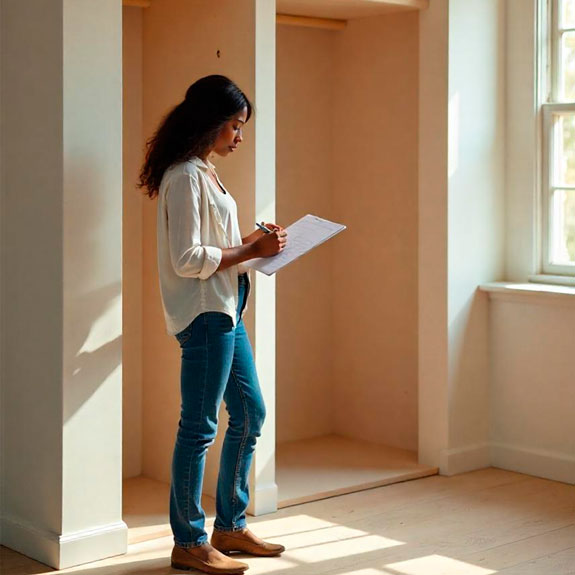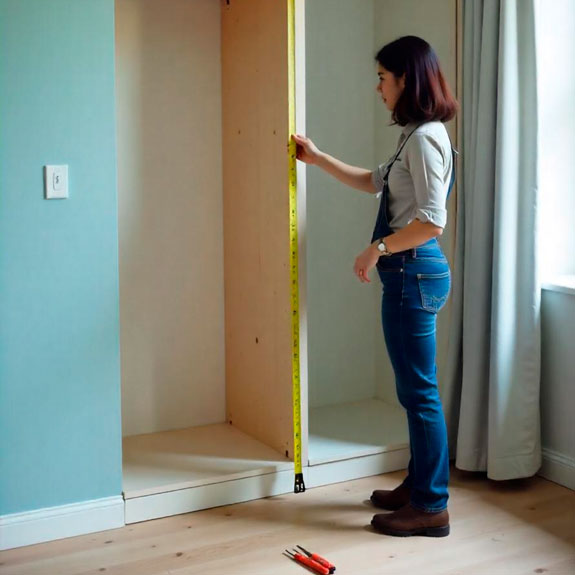Built-in furniture is a popular interior design solution, especially for those looking to maximize the use of space in their homes. In addition to being a functional option, their ability to blend in with the overall design of the home makes them an excellent aesthetic choice. Although they offer multiple benefits in terms of functionality and appearance, they also present certain limitations that are important to know before opting for their installation. Below, we will explore their characteristics, advantages, disadvantages and some tips to decide if they are the best option for you.
What is built-in furniture and how does it work?
Built-in furniture are fixed structures that are integrated directly into walls, ceilings or floors, designed to maximize available space and adapt perfectly to the specific characteristics of each room. Unlike conventional furniture, they cannot be moved or relocated once installed, making them a long-term investment.

Common uses:
- Bedrooms: Built-in closets for clothing and accessories, which can include internal lighting and customized storage systems.
- Living rooms: Custom bookshelves or TV modules that combine functionality and style.
- Kitchens: Storage adapted to specific spaces, such as corners or hard-to-use areas, to keep everything organized.
- Other spaces: Solutions under stairs, in attics or narrow corridors, optimizing every corner of the home.
Advantages of built-in furniture
- Complete space optimization: Built-in furniture makes it possible to take advantage of every corner, eliminating dead spaces or unusable areas. They are ideal for small rooms or rooms with irregular layouts, such as sloping ceilings or complex corners.
- Total customization: From design to materials, built-in furniture can be completely adapted to your needs. You can choose the internal layout, such as shelves, drawers, shoe racks and clothes rails, as well as select finishes and materials to match the style of your home.
- Clean and minimalist appearance: When integrated into the walls, they create a tidy and elegant environment. They are ideal for those looking for a contemporary and tidy style.
- Easy maintenance and increased durability: The lack of slits and gaps makes it difficult for dust to accumulate, which facilitates cleaning and prolongs its service life. In addition, high quality materials increase its resistance.
- Increased property value: Built-in furniture adds a touch of luxury and personalization that increases the attractiveness of a home in the real estate market.
- Versatility in decorative styles: They integrate perfectly into any design, from minimalist to rustic. You can include additional elements such as LED lighting to enhance its functionality and aesthetics.
Disadvantages of built-in furniture
- High cost: Custom design and specialized installation represent a significant investment. However, the added value can offset this initial cost.
- Permanently fixed: Once installed, they cannot move or adapt to changes in room layout.
- Complex installation process: May require masonry and carpentry work, resulting in temporary disturbances such as noise and dust.
- Spatial constraints: Its design is conditioned by the structural characteristics of the site, such as sloping walls or low ceilings.
- Difficulty for renovations: Redesigning or adapting built-in furniture can be costly and complicated if you decide to change the style of your room.
How to decide if built-in furniture is for you
Before opting for built-in furniture, consider the following points:
- Budget: Evaluate if you can afford the total cost, including design, materials and labor.
- Duration of stay: They are ideal for permanent properties, as they offer long-term benefits.
- Available space: If you have areas that are difficult to use or have unusual shapes, built-in furniture is a perfect solution.

An important tip is to work with professionals who specialize in custom furniture, such as those you can find at paratureforma.com, to ensure optimal results and personalized designs that fit your needs.
Common mistakes when installing built-in furniture
- Failure to plan the internal layout before building, which can result in non-functional storage spaces.
- Underestimate the impact of the works on your daily routine, especially if you live on the property during installation.
- Choosing finishes that do not harmonize with the general decoration of the house, which may detract from the aesthetic value of the final design.
In paratureforma.com, specialists in the sale of products for the reform, you will find high quality materials and professional advice to create built-in furniture that combine functionality, style and durability.
Frequently asked questions about built-in furniture
How much does it cost to install built-in furniture?
The price varies according to size, materials and complexity of design, but is usually a higher investment than prefabricated furniture.
How long does it take to install a built-in cabinet?
Depending on the design, it may take from a few days to several weeks.
Which materials are the most recommended?
Solid wood is ideal for durability, while MDF offers a more economical option.
Is built-in furniture suitable for all homes?
Yes, as long as the walls and structures are strong enough to support them.


